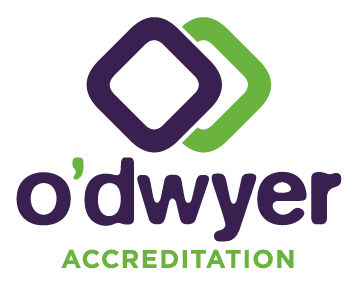
Do you feel overwhelmed by the lack of support when you plan ISO17025 or ISO15189 audits? Or have you planned too many internal audits and can’t finish them all (because they’re all a good idea, right)?
Or – do I even need to ask this? – do you struggle to get internal auditors to do the audits? If you can relate to any (or all) of the above, you are not alone! If you keep falling off the internal audit wagon, it might be time to decide what your minimum viable audit program is.
At times, we can see internal audits merely as a means to keep NATA happy. Failing to see their broader benefits, or resenting the time they take out of routine operations, we don’t want to – or simply can’t – invest too much in them.
But, at the same time, we hate unpleasant NATA assessments and want reassurance that the laboratory is on track. This is where a minimum viable audit program comes in.
A minimum viable internal audit program is designed to identify significant risks, find improvements and “keep NATA happy” at the same time. Of course, you can always do more, but you can be confident that you are covering the fundamentals by ticking off these baseline audits.
Here are the components we suggest:
Vertical audits of laboratory processes
By following a specific sample on its journey from arrival through the laboratory, the test report generated, and the location of the stored sample, you see a snapshot of how the whole system hangs together. As a result, you can gain real insight into all of the key laboratory processes. You can quickly identify risk areas such as handovers, transcriptions, unclear requirements and operators who have their own ways of doing things.
At the same time you should check a snapshot of competency, calibration, QC, and proficiency records to verify the compliance of the test report issued.
How many vertical audits you do each year depends on how many different workflows there are in your laboratory. Aim to do one in each main section.
One quality system audit every year or two
A quality system audit typically includes topics like non-conformances and complaints, checking that document control is working as intended, and ensuring management reviews have been done. However, if those tasks are part of your job, you may as well get on and do them rather than auditing them.
The trouble is, the management system does need to be audited. We recommend getting someone outside the quality team or a peer from another organisation to do this audit for you if at all possible.
If there’s no one looking at what you do in quality management until NATA comes, that makes your quality management systems vulnerable to sliding into disarray between assessments.
One resources system audit every year or two
Audit your systems for managing personnel, facilities and environment, equipment, metrological traceability and external services & supplies. Check if they are effective, comprehensive, systematic and compliant with ISO17025 or ISO15189 accreditation requirements.
These systems and procedures are often overlooked in the audit program, yet they are the fundamentals that support your technical competence.
A NATA preparation audit
Pull out the last NATA assessment report (or two) and go back into the laboratories to follow up on corrective actions. Are they effective? Have they reduced the chances of that nonconformance happening? Did the laboratory manager understand what NATA was getting at?
The benefits of doing this audit 12 months or more after the assessment can’t be underestimated. Sometimes “NATA corrective actions” don’t work well to address the root cause because you’ve had to implement them in a hurry after the assessment. Or they are time-consuming and expensive to implement. This audit is an opportunity to review and decide which corrective actions the laboratory should sustain and which should be dropped or modified.
Don’t be tempted to do this as a desktop audit – make sure you find evidence of compliance; otherwise, you may be standing there trying to explain to NATA why the same problem is still occurring.
Get your minimum viable audit program going consistently as a starting point, and then you can think about adding in other audits that may help drive improvements or support change.
If you’d like to explore how we can help you with audits, or redesigning your audit program, get in touch!


